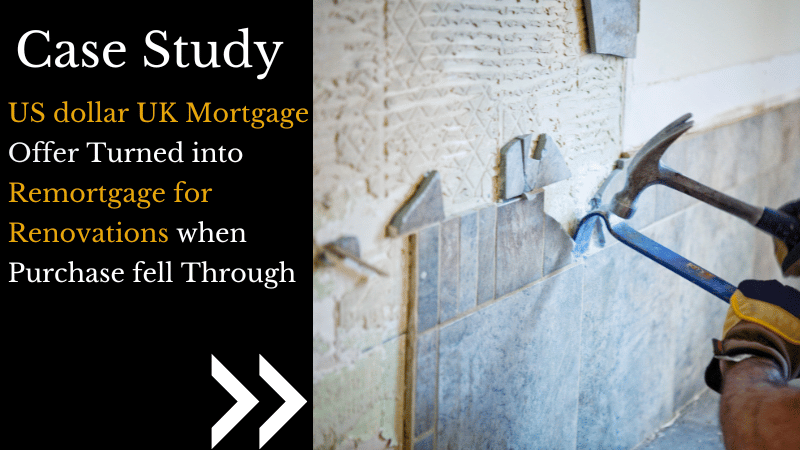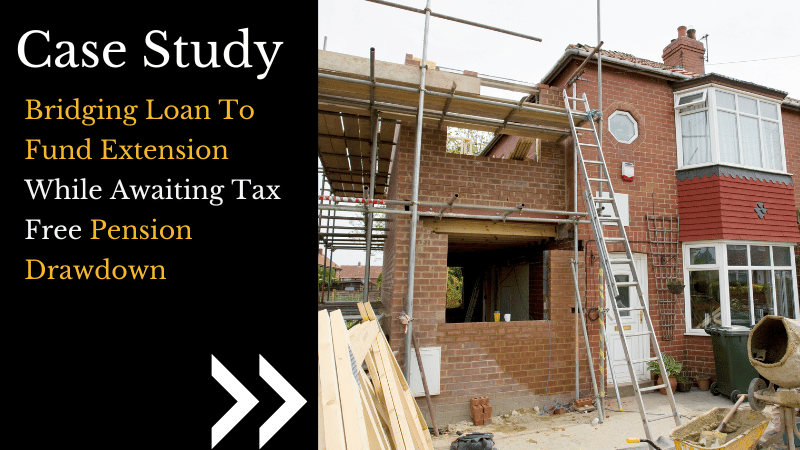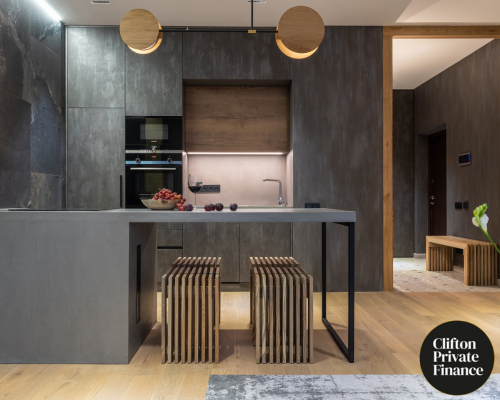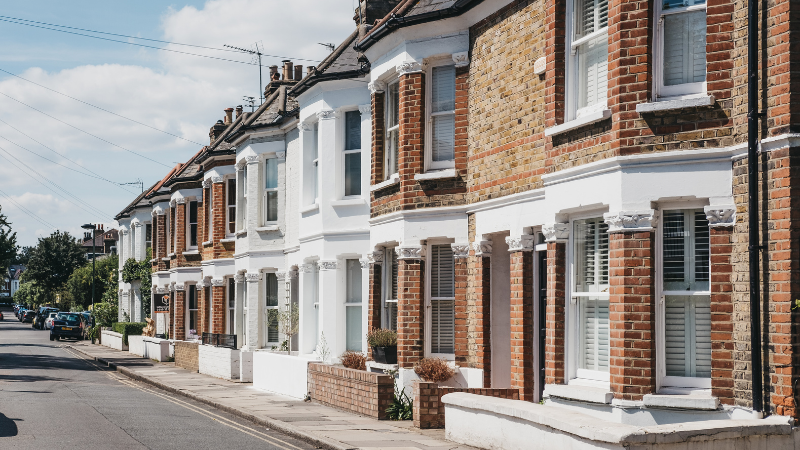Categories
How Much Does A House Extension Cost? (and How to Finance It)
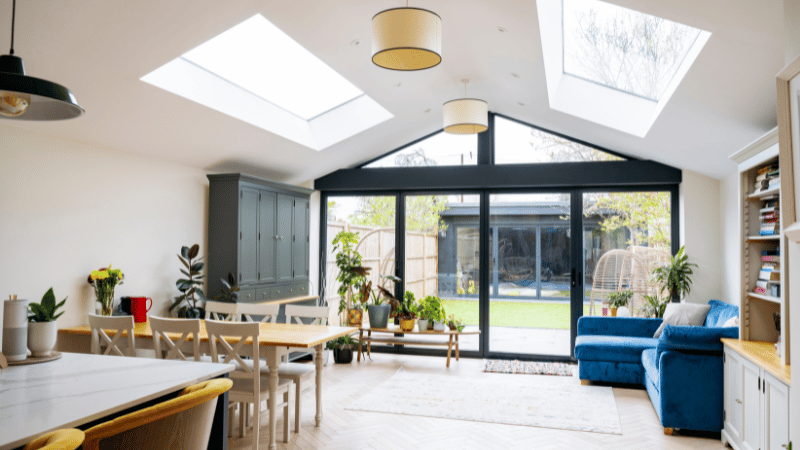
Adding an extension is one of the best investments in your home that you can make. Well planned and efficiently project managed, expanding the kitchen, adapting the loft into an additional bedroom, or building a better bathroom can all add significant value to the property, making the outlay an effective investment in the future - not only do you get to enjoy a better home today, but you improve your financial outlook for the future.
At Clifton Private Finance, we help homeowners secure extension funding by advising on the right kind of loan and matching you to a suitable lender who will offer you the best rates at the level of flexibility you need. Together, we can get the capital put in place to make your extension blueprints a tangible reality.
How Much Does a House Extension Cost?
While we’re not builders here at Clifton Private Finance, we’ve done our research. Across the UK, there are four areas for home extensions and refurbishments that get the most attention:
- Kitchen extensions and open-plan kitchen diners
- Bathroom renovations and expansion
- Loft conversions for extra bedrooms and en-suites
- Conservatories and orangeries.
But how much do these cost?
Extension Costs
Homebuilding.co.uk provides some excellent figures for understanding the cost of an extension. Working from a structural perspective homebuilding suggests that costs range from £2,200 to £3,300 per square metre of additional construction for a single storey.
While this is quite a wide range, it reflects the fact that there’s a lot of variety in terms of material quality, site specifics, or individual differences in contractor cost. Nonetheless, it provides us with a good base understanding.
This figure is increased by approximately 50% when building a two-storey extension, making the second storey a significant cost saving - well worth considering when making plans. You may not originally be wanting a new bedroom or study upstairs, but it’ll add yet more value at a much lower cost if all done together.
Note also that construction costs merely result in the building shell. It will mean foundations, walls, electrics, and plumbing and heating, but won’t include decoration, fittings, or furniture which must all be costed in addition.
Kitchen Fitting Costs
If you’re looking to specifically extend your kitchen, then in addition to the construction phase, you will need to install a new kitchen. Checkatrade suggests that fitting a new kitchen could cost between £5,250 for a small kitchen, up to £28,400 for a larger luxury kitchen. They put the average price at £10,550.
This includes both the costs of your physical kitchen - cabinets, sink, and build in appliances - and the installation costs. Often it’s the work that eats the majority of the budget, but like anything, it pays to have everything done professionally and well.
Bathroom Renovation Costs
Fitting a bathroom is slightly cheaper than a kitchen. Checkatrade advises that bathroom renovations range from £5,500 for a fully installed low-end suite, up to £14,000 or more for pure luxury.
The average price that people tend to pay in 2025 sits at £7,000 - a reasonable budget to consider for your bathroom extension project.
Loft Conversion Costs
Like a ground-level property extension, loft extension costs can vary wildly. This is because there’s no one-size-fits-all loft conversion, with different constructions, several window types, size, access, and internal needs all playing their part.
A simple Velux window conversion undertaken in a month or so can come in at a reasonable £27,500, a dormer conversion which includes new spaces to stand upright and gaze out of a traditional vertical window can come in between £40,000 and £60,000, while a full-scale Mansard build that’s effectively an entirely new floor, might reach £80,000 or more.
Checkatrade suggests that the average cost of a 30m² loft conversion in the UK is approximately £50,000 - a reasonable figure considering the living space benefits and property value increases it offers.
Conservatory Costs
With its lighter construction and single storey plan, a conservatory is among the more budget-friendly extensions, offering a bright new living space for as little as £1,800 per m².
Of course, luxury conservatories and full orangeries will raise that cost considerably, with high end construction moving towards £4,200 per m². Premiums also exist in some parts of the country, with London and the southeast priced as much as 35% higher than national averages.
Legal and Hidden House Extension Costs
Building your extension is not the whole of your budget, and care must be taken to include costs for the whole process. This will include:
- Planning costs
- Architect fees
- Legal fees
- Flooring
- Lighting
- Fixtures and fittings
- Decoration and furniture
Advice regarding the additional costs of your build tends to suggest reserving 10% of the overall budget for these hidden extras.
VAT is another significant consideration. While the figures we have gathered include VAT, it’s easy to overlook it when receiving quotes from potential contractors. While most will clearly list VAT on their estimates, if it isn’t detailed you should ask whether it is included or not. An unexpected 20% cost can throw most plans into disarray.
Planning and Budgeting for a Home Extension
Undertaking a project of such size requires careful planning and budgeting. While we at Clifton Private Finance are no experts on how to plan for your new home extension, we know a thing or two about budgeting.
One important consideration is that the finance you secure for your project will likely come in a single sum, and adding to it later can be challenging and potentially expensive. This means it is essential that you give yourself a realistic budget that sees the work through to completion, with plenty of flexibility to deal with unforeseen events.
We advise between 15% and 20% of headroom once the budget is fully calculated, to ensure there’s the money in the bank if circumstances change.
As your financial partner, at Clifton Private Finance we will be here for you throughout the project, helping you manage the finances and able to offer advice and support should anything unexpected threaten success. With open communication, we can help ensure a smooth undertaking from early planning to the final lick of paint.
6 Finance Options to Fund Your House Extension
As a homeowner, there are a range of powerful financial tools that can provide the money you need to make your extension happen.
The team at Clifton Private Finance will work with you to select the right finance, understand all the costs, and obtain the most competitive and flexible deal.
Your options for home extension finance include:
1. Remortgage
A remortgage to fund a house extension involves taking out a new mortgage that both replaces any existing mortgage and home loans and has enough left over to pay for the planned extension.
Remortgages are an excellent tool for homeowners looking to improve their homes, as they bring all new and pre-existing finance into one simple secured payment that has a low interest rate, long-term repayment schedule, and reasonable flexibility.
Remortgages also offer the largest level of finance possible, with loan-to-value (LTV) ratios up to 90%, freeing up as much capital as possible.
However, a remortgage involves a full and potentially lengthy application process, with affordability checks and thorough underwriting. It will also replace any existing mortgage rate with a new rate, which may not be suitable for homeowners on a low fixed rate.
An Illustrative Example of Remortgaging for an Extension
Ali and Dina are looking to extend their kitchen and bathroom. As the bathroom is currently above the kitchen, they have decided on a luxury two-storey extension and renovation that improves both in one project.
After much research and finding suitable contractors, they settle on a budget of £140,000, which includes everything they need for a full refitted kitchen and bathroom, plus an additional contingency fund of £20,000.
Their property is valued at £420,000 and they decide to opt for a full remortgage, using the money to sensibly consolidate other debts as well as pay for the extension. They allocate the capital as follows:
- £140,000 extension budget
- £175,000 repayment of existing mortgage
- £30,000 clearing all current credit card debt
- £12,000 paying off remaining car hire purchase early
- Total: £357,000
They are keen to get a flexible mortgage that allows for early repayment, as they hope to not need to break into the £20,000 contingency fund and intend to pay any remainder back into the mortgage once the construction work is complete.
Ali and Dina secure an 85% mortgage at 4.6% fixed rate for two years with no penalty for overpayments. With their other debts cleared, they easily pass the affordability and stress testing, and can comfortably afford the monthly mortgage payments.
The construction takes five months from start to finish, and comes in at a reasonable £124,000. The couple use the allocated £16,000 to immediately take a chunk off the mortgage total thanks to the lender’s 10% annual overpayment allowance, saving them in interest over future years.
They also have the property valued after the construction is finished. Pleasingly, the agents place a market value of £500,000 to £530,000, showing that their extension has already nearly paid for itself.
2. Second Charge Mortgage (Also Known as A Homeowner Loan)
Often called homeowner loans, a second charge mortgage is an additional loan secured by your property that is in addition to, and does not affect, your existing mortgage. Note that a second charge loan is only available to homeowners who have a current mortgage - if there is no other mortgage in place, then a remortgage (‘first charge’) would be the appropriate loan structure.
A second charge loan has both advantages and disadvantages when compared to a full remortgage, including:
- No impact on current mortgage - Both an advantage when the current market rates are inferior to your existing mortgage deal, and a disadvantage when the opposite is true, a second charge mortgage leaves your existing mortgage intact and untouched, with its own rate, term length, and monthly repayment.
- Slightly easier application - With slightly less rigorous underwriting and affordability testing, a homeowner loan is quicker to obtain than a full remortgage.
- Higher interest rate - Second charge loans are considered subordinate to first charge mortgages, meaning that in the case of a repossession, they are repaid only when the main mortgage is fully cleared. This makes them a greater risk to the lender and results in slightly higher interest rates than a comparable remortgage.
- Potentially smaller loan sum - Multiple loans secured on your property are capped by a maximum combined loan-to-value, often of 85%. This means there are less funds available to use through a second charge mortgage than a full 90% LTV remortgage option.
Making the decision between a remortgage and homeowner loan is one of the main considerations for homeowners looking to fund a house extension. Your individual circumstances and current market rates will both be large factors to evaluate - professional calculations done by a Clifton Private Finance expert will help you make the right choice.
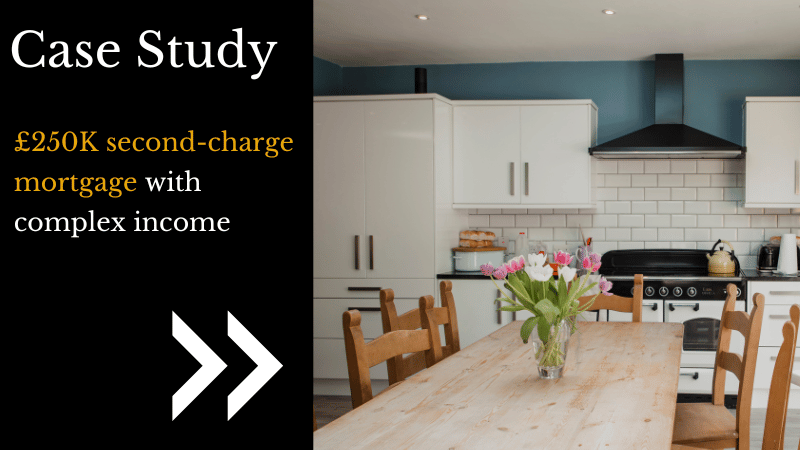
Second Charge Mortgage Calculator Last updated: 30th September 2025
Total LTV: --%
3. Bridging Finance
Bridging finance is an extremely powerful tool for homeowners looking to make significant changes to your property.
With alternate underwriting and an exit strategy based repayment structure, bridging finance can be put in place extremely quickly with a plan to either refinance the debt through a mortgage in the future, or to sell the house for profit once the renovation is done.
Houses that have become rundown to the state of being uninhabitable - for example, missing a working kitchen or bathroom, suffering structural defects, or with long-term problems such as dangerous levels of damp and mould - will find owners struggling to secure a mortgage.
This is because mortgage regulations stipulate that a property must be in a liveable condition to act as security - bridging finance has no such criteria.
Many homeowners looking to make significant renovations and modernisation to existing rundown properties will look to bridging finance as a short-term solution until a mortgage can be put in place for long-term repayment.
Speak to a Clifton Private Finance advisor to learn more about how bridging finance can open the doors to more ambitious house extension and renovation projects.
4. Lifetime Mortgage
For homeowners aged 55 and over, who are either approaching retirement or are already retired, a lifetime mortgage offers a unique loan structure to enable house extensions and renovations without any monthly repayments.
Part of a larger umbrella of equity release products, a lifetime mortgage works by securing a loan on the property that is repaid only when a life event occurs. This is typically either:
- Death of the homeowner
- Homeowner moves into full-time care
- The property is sold
Rather than paying for the mortgage over time, the balance of the loan is settled by selling the house and using the proceeds to pay the sum due, including all interest accrued.
Lifetime mortgages are an excellent and powerful way to release money locked in your home. You are guaranteed the right to live in your home for the remainder of your life and can enjoy your home improvement without worry.
One of the benefits of an equity release product like a lifetime mortgage is that it can provide the funds to adapt your home for accessibility needs as you enter old age, as well as unlocking additional funds to improve your retirement years.
Along with larger home extension problems, converting bathrooms to walk-in showers, widening doorways and corridors for wheelchair access, or building ramps and pathways to continue to enjoy your garden are all beneficial projects made possible with a lifetime mortgage.
Specialist advice and support is recommended when considering any equity release or lifetime mortgage product as the final repayment and generated interest will impact your estate for later inheritance. Discuss your needs with us at Clifton Private Finance to understand your options and move forward with an informed decision.
5. Drawdown Mortgage and HELOC
Alternative choices for retirement equity release for homeowners include drawdown mortgages and HELOC structures. These share many similarities with a lifetime mortgage, including the life-event repayment and lifetime residency guarantee, but also offer a more flexible way to release the funds that can minimise the interest generated.
A drawdown mortgage works by releasing funds in stages, with interest accrued only on the money once it is used. This allows you to stagger your house extension payments based on the project milestones, potentially saving hundreds and even thousands of pounds in interest.
Even more flexible is a Home Equity Line of Credit (HELOC), which is structured a little like a credit card with a large limit that’s secured by your home. You can draw on it to pay for the work done on your home as you need, with an option to make repayments to suit your finances. Interest is only generated by the balance of the HELOC, rather than the full credit available, resulting in the greatest flexibility of all equity release products - though rates are generally higher than simpler lifetime mortgage structures.
While HELOCs are relatively common in the US and other countries, they are relatively new in the UK and can only be obtained by specific specialist lenders. Clifton Private Finance can help you secure one of these unique loans for your house extension - talk to an advisor about equity release HELOCs today.
6. Unsecured Loan
Unsecured personal loans are rarely used as the main source of capital for a home extension. This is primarily because the rates are higher than with secured loans, and the sums available are smaller - typically capped at £25,000.
However, they exist as a useful option should projects spiral out of budget with additional funds needed to finish the work.
Lenders will base the loan acceptance and interest rate on your credit history, so maintaining a strong record of on-time payments and credit management is essential if an unsecured loan forms your contingency plan.
Financing a House Extension with Clifton Private Finance
Properly budgeted and project managed, a house extension can bring so much to your home, giving you the extra space and modern feel that you’re after, while increasing your home’s market value to offset the costs. With a range of low-cost and flexible finance available, there’s nothing stopping you from enjoying a larger, better home.
Partnering with Clifton Private Finance will give you access to the full UK marketplace of mortgage lenders and specialist financiers that can support your construction project with full funding and experienced advice.
Whatever stage of your build project you’re at, speak to one of our independent finance advisors to see how we can put the finance in place to make the whole process smoother and less stressful.






